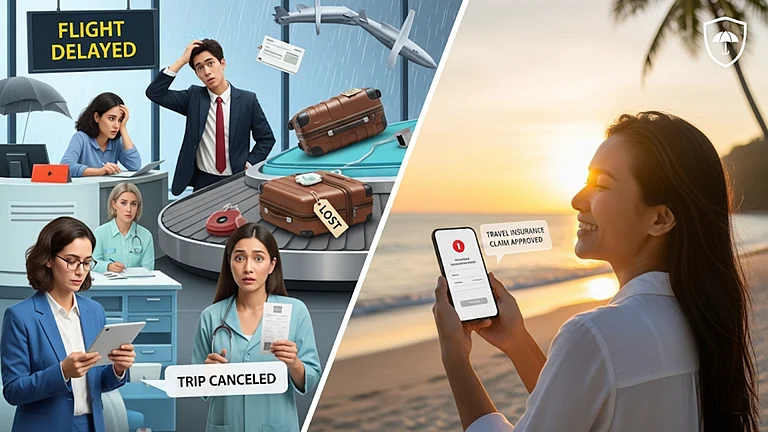
Summary of this article
Offbeat trips are typically shorter, averaging 18 days compared to 51 days for mainstream destinations. However, travelers are opting for stronger insurance covers, and increasingly adding adventure sports riders, reflecting a preference for diving, trekking, safaris, and other activity-rich itineraries.
Indians are no longer just flying to Europe, Dubai, or Singapore when they think of an international holiday. Over the past two to three years, there has been a sharp rise in interest for less conventional destinations, for places like Seychelles, Vietnam, Sri Lanka, Fiji, and even Kenya. Alongside this shift, travel insurance purchases for such locations have surged by about 45 per cent, according to new data from Policybazaar.
To put things in perspective, insurance linked to these “offbeat” spots still makes up only around 11 per cent of the volumes generated by traditional corridors. But the pace of growth is striking enough to suggest that they are steadily moving into the mainstream.
Offbeat destinations that are leading the pack
Among the top offbeat travel destinations, Seychelles has found its spot at number one with data showing a 115 per cent year-on-year rise in insurance buys in 2025 compared to 2024 for this place.
Vietnam, too, recorded nearly 50 per cent growth due to its affordable travel costs, simpler visa processes, and a varied cultural mix that appeals to younger tourists. Other countries which are also popular offbeat travel destinations include the Philippines, Sri Lanka, and Fiji, with eco-tourism and activity-driven experiences adding to their appeal.
Young Travellers Drive the Shift
The bulk of this demand is being driven by younger professionals. The 25 to 35 age group accounts for 44 per cent of offbeat travel insurance purchases, though overall buyers span the 23 to 60 brackets. What stands out is the kind of cover they are choosing, as many policy buyers are opting for coverage up to USD 100,000 or more.
This could also mean people with higher incomes are the takers for such policies, who are also cautious about medical costs in remote locations where hospital facilities are limited and evacuation expenses can be steep.
Shorter Trips, Bigger Risks
Travel to such offbeat locations tend to be shorter with an average duration of 18 days, against 51 days for mainstream destinations. Despite this, travelers are not skimping on coverage as many are also buying adventure sports add-ons like diving, trekking, and safaris are popular activities at these locations.
This also points towards the claims data where medical emergencies from such trips, mostly driving accidents, altitude-related sickness, and sudden medical evacuation are most common.
These are also followed by claims against flight disruptions and baggage issues since some of these destinations, like Vietnam, often involve multi-hop connections and patchy logistics.
Policy purchase patterns reflect the nature of these trips, too. Since many offbeat countries are visa-free or do not require upfront proof of insurance, travellers often buy their policies closer to departure. This last-minute behaviour, coupled with higher coverage, underlines the spontaneous yet risk-aware style of travel that is becoming common.
What are the peak seasons for travel to offbeat destinations?
The demand for offbeat travel insurance usually peaks between October to March, which also happens to be festival season aided by pleasant weather.
Since the pandemic, however, there has been a clear tilt toward less crowded, “hidden gem” destinations. Insurance purchases for such trips have risen by more than 50 per cent compared to pre-Covid levels.
What is Next?
Looking ahead, Japan is expected to see the strongest growth over the next couple of years. Its mix of safety, cultural richness, and infrastructure is likely to move it from a niche choice into a mainstream destination for Indian travellers.
Meet Kapadia, head of travel insurance at Policybazaar, summed it up by saying, “Indian travellers no longer want cookie-cutter itineraries. They are seeking destinations and experiences that are adventurous, spontaneous, and sometimes unpredictable, but they are making sure they’re financially protected with higher coverage and add-ons.”













